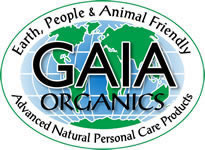|
|
 |
|
 |
 |
| Many manufacturers and distributors of so-called natural and/or organic personal care products claim to have made an informed choice to use Cocamidopropyl betaine (CAPB) rather than Sodium lauryl ether sulphate (SLES) as a foaming agent in their products, are often disparaging of their competitors use of SLES and usually fraudulently miscontextualise or even fabricate misinformation regarding the safety of SLES. Cocamidopropyl betaine (CAPB) is an non-ionic, amphoteric surfactant, foaming agent and emulsifier used in the formulation of rinse-off shampoos, liquid soaps, gels and cosmetic and household cleansers due to its reputation as being a milder (less irritating) agent than most older and many contemporary alternatives, including Sodium lauryl ether sulphate (SLES), especially from the point of view of being less stinging to the eyes. Made from coconut oil, with petrochemical ingredients, Cocamidopropyl betaine is a quasi-natural substance, as is SLES. Being notably milder to the eyes quickly led to its preferential use in baby shampoos and to manufacturers claiming their product to be milder and safer than that of their competitors who were using Sodium laureth sulphate/Sodium lauryl ether sulphate (SLES). This in turn led to consumer advocates, doctors, consumers and patients assuming that a less irritating product such as a baby shampoo would be safer for the skin, causing more to formulate with, recommend and to seek out CAPB based products over those containing SLES. Cocamidopropyl betaine is a tamed version of a harsher older surfactant, Cocamide DEA, as is Sodium Lauryl Ether Sulphate (SLES) a tamed version of the harsher older Sodium Lauryl Sulphate (SLS). Cocamidopropyl betaine does however have a dark side that surfaced along with increasing consumer usage, namely its identification and confirmation as a contact allergen, something that Sodium lauryl ether sulphate (SLES) is not. Furthermore, like SLES, which its detractors, based on its early manufacturing standards and also current industrial grades, but not necessarily in its modern cosmetic grade incarnation, point out, Cocamidopropyl betaine contains several allergenic impurities including carcinogenic nitrosamines, (Haz-Map, Natl Inst Health, USA, 20 July, 2004), making a double mockery of SLES-critical manufacturer's claims of a better safety profile for CAPB. Since its introduction, Cocamidopropyl betaine been increasingly revealed, like SLES, to be a skin sensitizer, but moreover, unlike SLES, CAPB has increasingly been identified as a significant cause of allergic contact dermatitis, to the extent of being voted Contact Allergen of the year for 2004 by a committee of international experts (Mowad C, Adv Dermatol, 20:237, 2004). With reports of confirmed allergenic dermatitis
caused by Cocamidopropyl betaine having first been recorded more
than a decade ago, CAPB is now unquestionably documented and acknowledged
as one of the most frequent (SLES does not even feature) causes
of dermatitis of the head, neck and face in humans and especially
so of the eyelids and lips of infants, where its use can lead to
intractable inflammation and scaling (Korting
H et al, J Am Acad Dermatol, 27(6 Pt 1), 1992); (Peter C et al,
Contact Dermatitis, 26(4), 1992); (Taniguchi S et al, Contact Dermatitis,
26(2), 1992); (Fowler J, Cutis, 52(5), 1993); (Angelino G et al,
Contact Dermatitis, 32(2), 1995); (de Groot A, et al, Contact Dermatitis,
33(6), 1995); (de Groot A, Clin Dermatol, 15(4), 1997); (Angelini
D et al, Contact Dermatitis, 39(4), 1998); (Brand R et al, Australas
J Dermatol, 39(2), 1998); (Lin-Hui S et al, Contact Dermatitis,
38(3), 1998); (Armstrong D et al, Contact Dermatitis, 40(6), 1999);
(Krasteva M et al, Europ J Dermatol, 9 (2), 1999); (Yasunaga C et
al, Environ Dermatol, 7(1), 2000); (Hashimoto R et al, Environ Dermatol,
7(2), 2000); (Mowad C, Am J Contact Dermatitis, 12(4), 2001); (McFadden
J et al, Contact Dermatitis, 45(2), 2001); (Foti C et al, Contact
Dermatitis, 48: 194, 2003); (Moreau L et al, Dermatitis, 15(3),
2004); (Goosens A, Bull Soc Belge Ophtalmol, 292, 11, 2004); (Brey
N et al, Dermatitis, 15(1), 2004); (Fowler J et al, Am J Dermatol
(15(1), 2004); (Shaffer K, 15th Ann Meet Am Contact Dermatitis Soc,
Wash, 5 Feb, 2004); (Agar N et al, Australas J Dermatol, 46(1),
2005); (Bloom M, Recognising contact dermatitis, Dermatol Times,
June, 2005). |
|
||
| |
||
|
||
| |
||
|
Gaia is copyright © 2006 Gaia all rights
reserved Designed by Webs The Way |
||
|
Page Counter as of January 2008 |